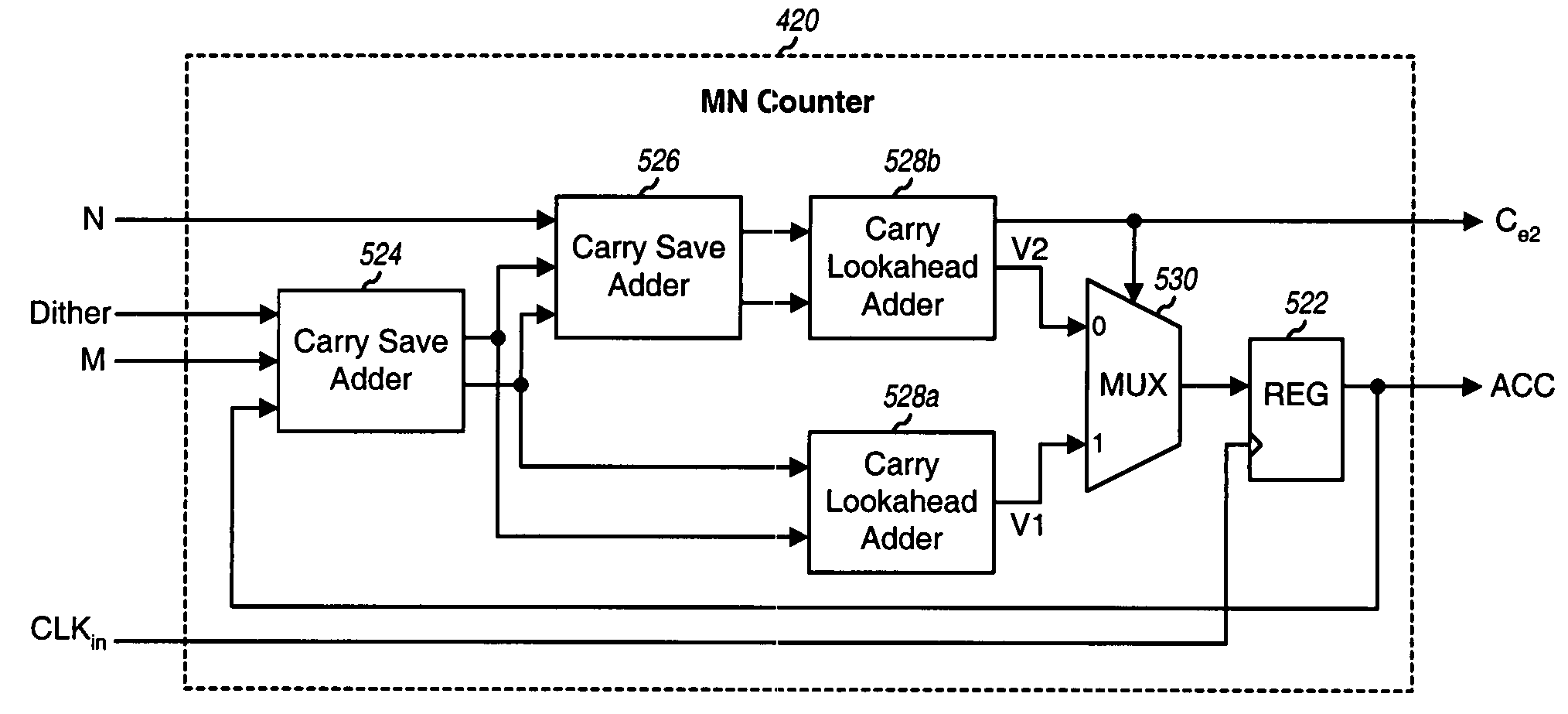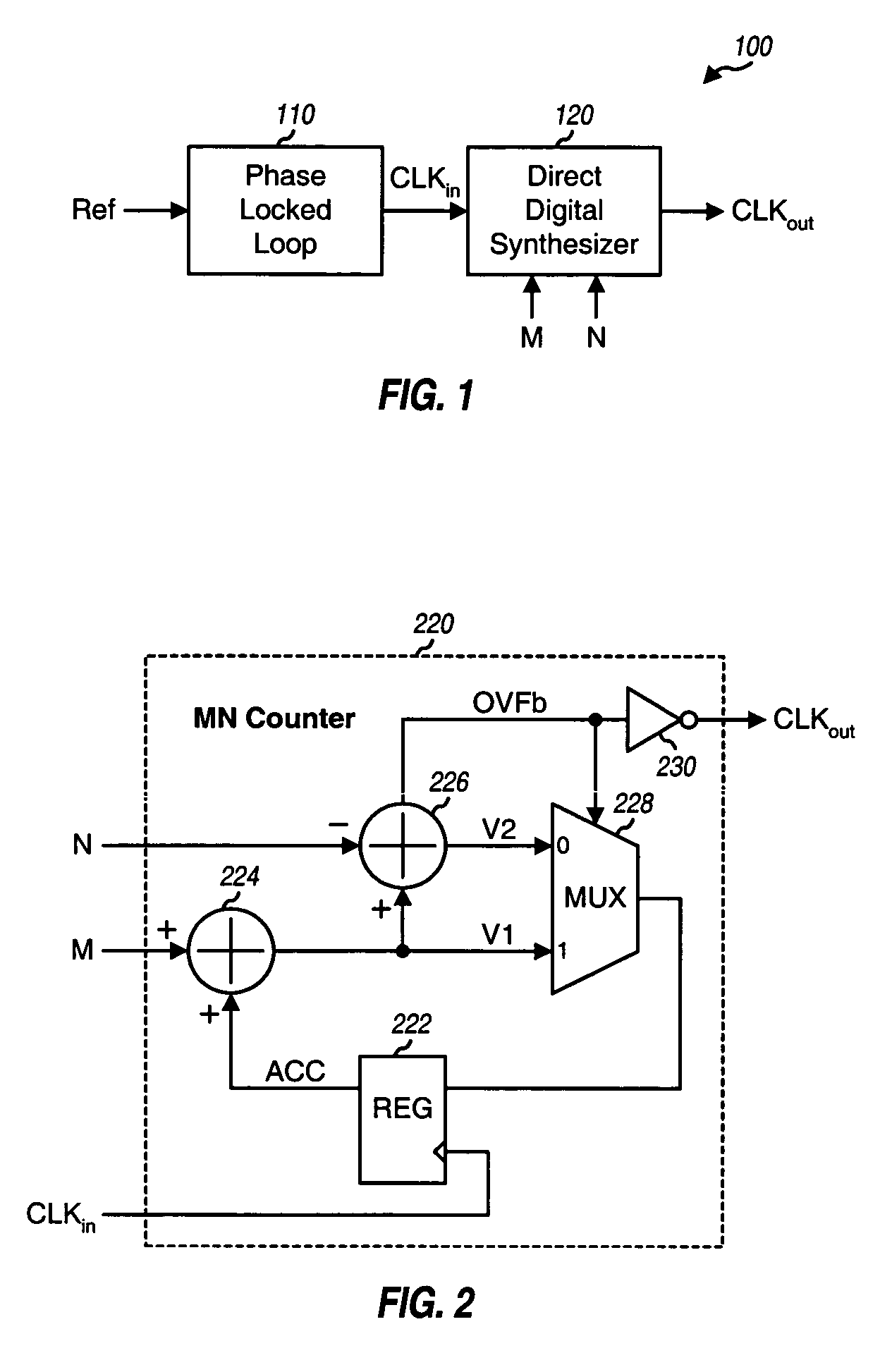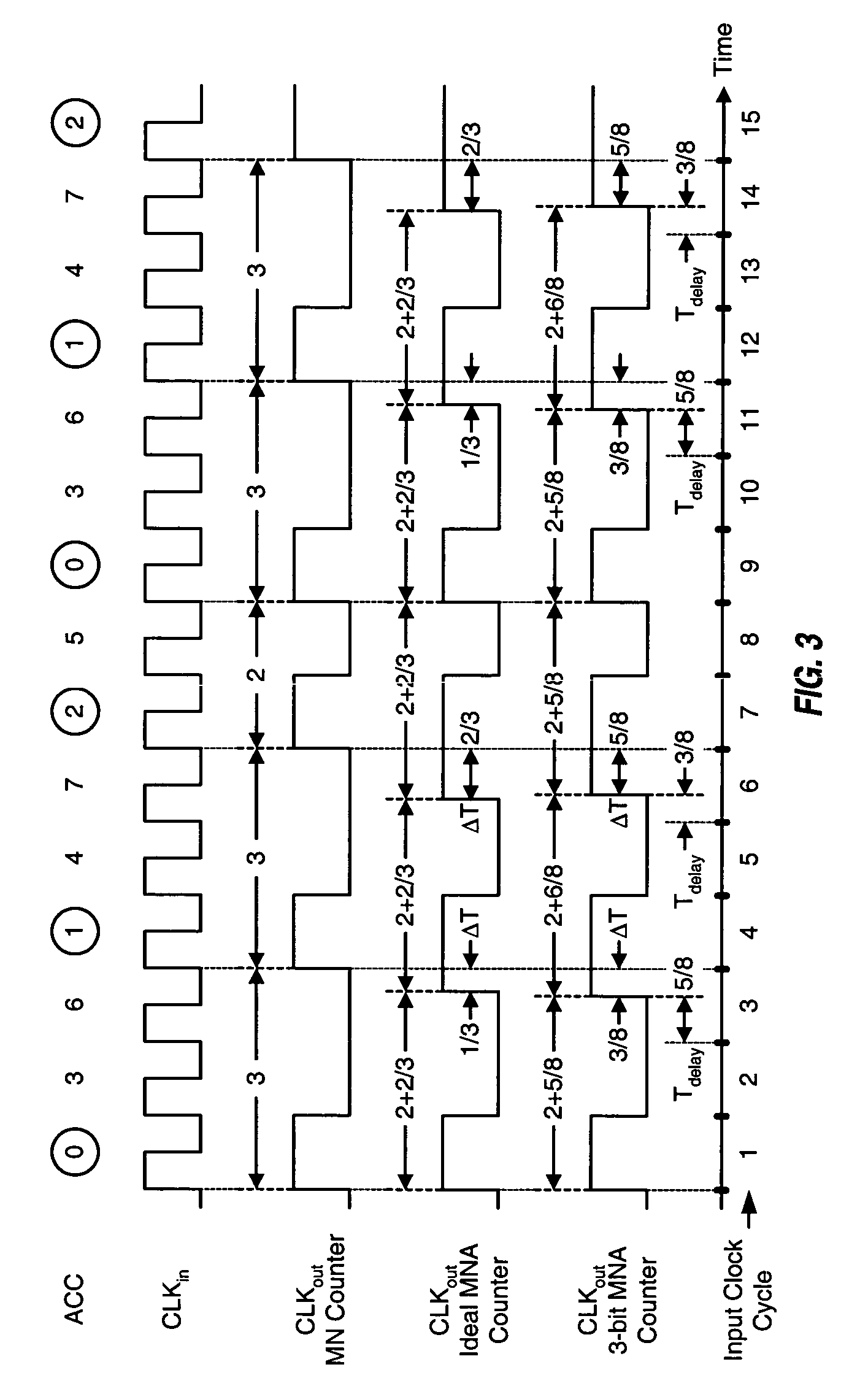Low-power direct digital synthesizer with analog interpolation
- Summary
- Abstract
- Description
- Claims
- Application Information
AI Technical Summary
Benefits of technology
Problems solved by technology
Method used
Image
Examples
Embodiment Construction
The word “exemplary” is used herein to mean “serving as an example, instance, or illustration.” Any embodiment or design described herein as “exemplary” is not necessarily to be construed as preferred or advantageous over other embodiments or designs.
FIG. 1 shows a block diagram of a clock generation subsystem 100 that includes a phase locked loop (PLL) 110 and a direct digital synthesizer (DDS) 120. PLL 110 receives a reference signal (Ref) and generates an input clock signal (CLKin). The input clock signal has its frequency and / or phase locked to that of the reference signal. PLL 110 may be implemented with a phase-frequency detector (PFD), a loop filter, a voltage controlled oscillator (VCO), and a divider, as is known by one skilled in the art. DDS 120 receives the input clock signal and generates an output clock signal (CLKout) having a frequency that is a fraction of the input clock frequency.
FIG. 2 shows a block diagram of a conventional MN counter 220 that may be used for...
PUM
 Login to View More
Login to View More Abstract
Description
Claims
Application Information
 Login to View More
Login to View More - R&D
- Intellectual Property
- Life Sciences
- Materials
- Tech Scout
- Unparalleled Data Quality
- Higher Quality Content
- 60% Fewer Hallucinations
Browse by: Latest US Patents, China's latest patents, Technical Efficacy Thesaurus, Application Domain, Technology Topic, Popular Technical Reports.
© 2025 PatSnap. All rights reserved.Legal|Privacy policy|Modern Slavery Act Transparency Statement|Sitemap|About US| Contact US: help@patsnap.com



